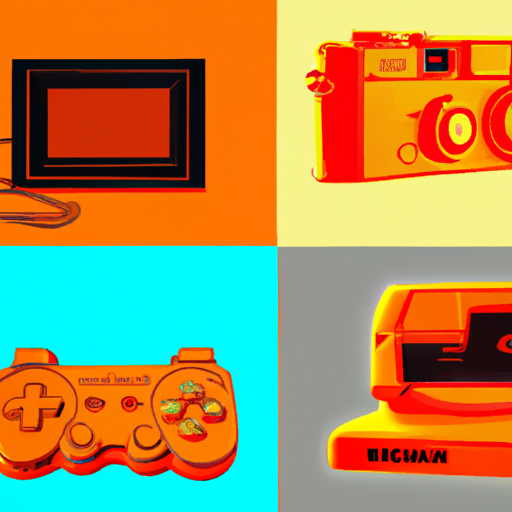
-
Table of Contents
Incorporating Retro Gaming Aesthetics in Modern Design

Introduction: The Nostalgic Appeal of Retro Gaming
With the rapid advancement of technology, it’s easy to get caught up in the latest trends and innovations. However, there is a growing trend in design that looks to the past for inspiration – retro gaming aesthetics. The nostalgia associated with classic video games has captivated designers and consumers alike, leading to a resurgence of retro-inspired designs in various industries. In this article, we will explore the reasons behind the appeal of retro gaming aesthetics and how they can be effectively incorporated into modern design.
The Allure of Retro Gaming Aesthetics
1. Nostalgia: Retro gaming aesthetics evoke a sense of nostalgia for a bygone era. Many people who grew up playing classic video games have fond memories associated with the pixelated graphics, chiptune music, and simple yet addictive gameplay. By incorporating these elements into modern design, designers can tap into this nostalgia and create a sense of familiarity and comfort for their audience.
2. Unique Visual Style: Retro gaming aesthetics have a distinct visual style that sets them apart from modern designs. The pixel art graphics, limited color palettes, and blocky shapes create a charming and retro feel that is instantly recognizable. This unique visual style can help a brand or product stand out in a crowded market, making it more memorable and appealing to consumers.
3. Simplicity and Accessibility: Retro games were often simple and easy to understand, making them accessible to a wide audience. This simplicity is reflected in their aesthetics, with clean lines and minimalistic designs. By incorporating retro gaming aesthetics into modern design, designers can create user-friendly interfaces and experiences that are intuitive and easy to navigate.
Examples of Retro Gaming Aesthetics in Modern Design
1. Logo Design: Many brands have embraced retro gaming aesthetics in their logo designs. For example, the logo of the popular video game streaming platform Twitch features a pixelated smiley face, reminiscent of classic video game sprites. This logo not only appeals to gamers but also conveys a sense of fun and playfulness.
2. Packaging Design: Retro gaming aesthetics can also be seen in packaging design. The limited color palettes and pixel art graphics are often used to create eye-catching and nostalgic packaging for products. For instance, the packaging of the Super Nintendo Entertainment System Classic Edition features pixelated artwork and a retro-inspired design that appeals to fans of the original console.
3. User Interfaces: Retro gaming aesthetics can be effectively incorporated into user interfaces to create a unique and engaging experience. For example, the video game “Undertale” uses pixel art graphics and chiptune music to create a retro-inspired interface that complements the gameplay and narrative. This design choice enhances the overall experience and immerses the player in the game world.
Case Studies: Successful Implementation of Retro Gaming Aesthetics
1. “Stardew Valley”: “Stardew Valley” is a popular indie game that draws inspiration from classic farming simulation games like “Harvest Moon.” The game features pixel art graphics, chiptune music, and a retro-inspired interface. The nostalgic appeal of these aesthetics, combined with the addictive gameplay, has contributed to the game’s success and cult following.
2. “Cuphead”: “Cuphead” is a visually stunning game that pays homage to 1930s cartoons. The game features hand-drawn animations, jazz-inspired music, and a vintage color palette. The retro aesthetics of “Cuphead” not only create a unique visual style but also enhance the overall experience, immersing players in a world reminiscent of old-school animation.
Statistics: The Impact of Retro Gaming Aesthetics
1. According to a survey conducted by Nielsen, 47% of gamers aged 18-34 enjoy playing retro or classic video games. This indicates a significant market for retro gaming aesthetics in modern design.
2. The popularity of retro gaming aesthetics can be seen in the success of retro-inspired products. For example, the NES Classic Edition, a miniaturized version of the original Nintendo Entertainment System, sold out within minutes of its release, demonstrating the demand for nostalgic gaming experiences.
Conclusion
Incorporating retro gaming aesthetics in modern design can be a powerful way to evoke nostalgia, create a unique visual style, and enhance user experiences. By tapping into the allure of classic video games, designers can create designs that stand out, appeal to a wide audience, and leave a lasting impression. Whether it’s through logo design, packaging design, or user interfaces, retro gaming aesthetics offer a wealth of opportunities for designers to explore and innovate. As the popularity of retro gaming continues to grow, we can expect to see more brands and products embracing these aesthetics in the future.
